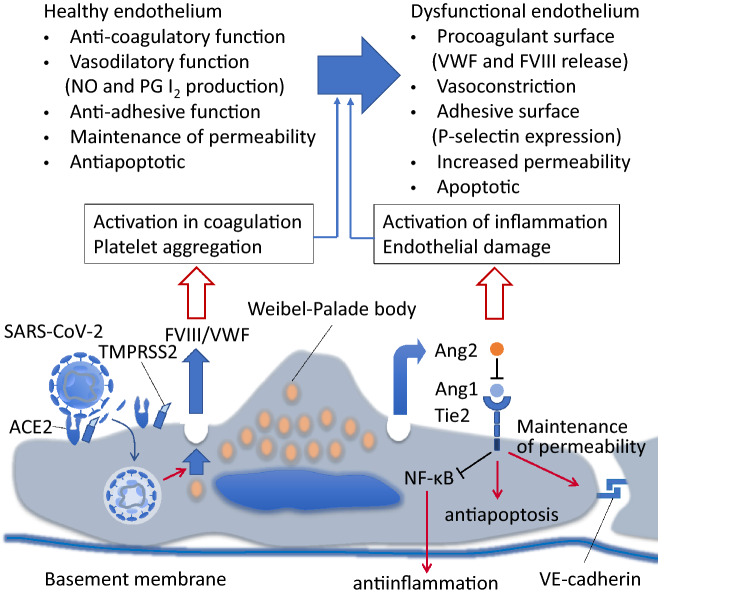Fig. 3.
Functional change of the endothelial cell via angiopoietin pathways. Angiopoietin (Ang)-1 binds to Tie2 receptor and promotes variable actions including an anti-inflammatory through inhibiting the nuclear factor kappa B (NFκB) signaling, apoptosis, and maintain vascular permeability by through the regulating cytoskeletal architecture and VE-cadherin. Severe acute respiratory syndrome (SARS)-CoV-2 infection stimulates endothelial cells to release stored Ang2 from Weibel Palade bodies into the circulation. Ang2 competitively antagonizes Ang1/Tie2 signaling, thus turns the anticoagulant, and anti-inflammatory features of endothelial cells to the opposite ways. NO nitric oxide, PG I2 prostaglandin I2, ACE2 angiotensin converting enzyme 2, TMPRSS-2 transmembrane protease serine 2

